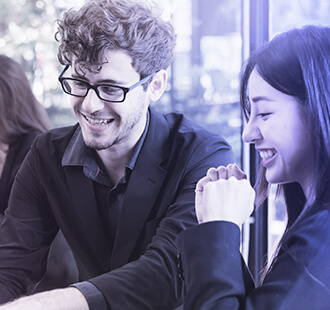
As the year ends, we expect what 2023 will bring. One of the things that marketers are constantly trying to beat is the upcoming trends. And this time is no exception.
Many trends forecasted for 2023 are similar to this year’s novelties. From an increase in influencer marketing, Artificial Intelligence implementation, and sustainability, next year promises to be filled with innovation in practices that we already know.
If you want to get ahead of the curve, read along to learn more about what is predicted in the marketing industry.
The Proliferation of AI and Automation
We look ahead to 2023 and the proliferation of AI and automation. Artificial Intelligence can automate mundane tasks, giving marketers time to focus on creative strategies. Marketing professionals can also use AI to identify customer segments, craft targeted campaigns, and track analytics.
According to an article in Forbes, AI marketing is a way to facilitate improving the customer journey. AI-driven marketing can create highly personalized experiences that enhance customer engagement. In addition, automation tools help marketers to send timely and relevant customer messages and make it easier to measure campaign performance.
AI and automation are becoming increasingly important tools in marketing, and companies should embrace these technologies to maximize the effectiveness of their campaigns. As we move into 2023, embracing AI-driven marketing will become a competitive advantage for businesses that want to stay ahead of the curve.
The Rise of Influencer Marketing
In the marketing world, influencer marketing is one of the most powerful tools. Influencers can reach large audiences and influence their opinions, making them incredibly valuable to brands looking to get their message out. This trend has been on the rise for some time now, and it’s only expected to continue to grow in popularity.
The benefits of influencer marketing are clear. It’s cost-effective, requires little effort, and can generate significant results. As a result, it’s no surprise that influencer marketing is expected to be one of the biggest trends in marketing in 2023.
Brands must remember that influencer marketing can be a powerful tool, but it’s not without its challenges. The Harvard Business Review evaluated the value of influencer marketing in an article. One of their conclusions was that when selecting influencers to collaborate with, brands should look at their follower base, frequency of posts, and if they share similar interests.
Despite these challenges, influencer marketing will remain a top trend in 2023. Brands should consider leveraging influencers to reach new audiences and build brand awareness. By keeping their campaigns simple and focusing on creating quality content, they can maximize the potential of this powerful marketing tool.
The Growth of User-Generated Content
The marketing landscape is rapidly changing, and businesses must stay on top of the trends to stay competitive. One trend that looks to be gaining traction in 2023 is user-generated content (UGC). UGC is content created by people, such as customers, fans, or influencers, that companies use to promote their products or services.
As customers become savvier, they’re looking for real-world experiences they can trust. User-generated content provides an authentic and reliable source of information for brands to build trust with their customer base.
According to an article by Buffer, the real value of UGC lies in its authenticity. UGC also allows businesses to leverage their customers’ creativity and amplify their message. Content produced by influencers and customers can help companies reach new audiences and increase engagement.
The Power of Video Content
Video content has become increasingly popular for marketers looking to capture the attention of their target audience. With the exponential growth of platforms such as TikTok and Instagram, it is expected that as more people become comfortable with streaming video and technology continues to improve, the power of video content will continue to increase.
The Act pointed out in an article that technological advances have made it easy for businesses to create video content. Fortunately, the same technology has also made it incredibly convenient for people to consume video content.
From videos on social media to complex video ads, this type of content allows businesses to showcase their products and services engagingly. Marketers should also consider creating video tutorials or webinars to educate their audience on specific topics. In addition, video content can be used to build a personal connection with your audience, thus making it easier to sell products and services.
As video content continues to evolve in 2023, marketers should use this powerful medium to reach their target audience. By using videos strategically, businesses can capture the attention of their viewers and increase organic search traffic. Keep it simple and focus on delivering valuable content to help viewers understand your products and services.
The Importance of Personalization
As technology continues to evolve, the way we market and reach our target audiences is also changing. One of the most important trends is the emphasis on personalization.
Personalization involves tailoring your marketing messages and content to your audience’s interests and needs. This type of marketing enables you to deliver more relevant content and products that are better suited to your target customer base. Doing this can increase engagement, build trust, and create loyal customers.
You can use data-driven techniques to learn about your audience’s preferences. This will help you create content that resonates with them and encourage them to take action. You can also use social media personalization to target specific audiences.
Personalization can also help you optimize your website, giving visitors a better user experience. By providing targeted content personalized to their needs, you can make it easier for visitors to find what they’re looking for. This will make them more likely to convert into customers.
It’s important to note that personalization isn’t just about delivering targeted messages and content. It also involves creating meaningful connections with your customers by providing excellent customer service. Personalizing your customer service efforts allows you to show customers that you care about them and are willing to go the extra mile.
Overall, personalization is essential for staying competitive in the ever-changing marketing landscape. By taking advantage of this trend and implementing it in your marketing strategy, you can reach new heights in customer engagement and loyalty.
The increasing use of AR/VR Technology
The marketing landscape is constantly changing, and the trends for 2023 are no exception. One of the most prominent trends for this year is the increasing use of Augmented Reality (AR) and Virtual Reality (VR) technologies. This trend has been growing steadily recently, but it looks to explode in 2023 as marketers realize this cutting-edge technology’s potential.
AR/VR technology has a wide range of applications in marketing, from product demos and virtual showrooms to interactive ads and digital experiences. According to an article by Smart Insights, this technology can provide immersive experiences that engage customers and offer a unique opportunity to demonstrate products and services. It can also measure customer engagement and behavior, allowing marketers to tailor their campaigns and messaging more effectively.
In addition to increasing customer engagement, AR/VR technology can also be used to collect valuable data about customer preferences. By tracking customer behavior, marketers can gain insight into what content resonates with their target audience and decide their strategies accordingly.
As marketers embrace AR/VR technologies in 2023, we’re sure to see some exciting developments that will revolutionize how we interact with customers. Keep an eye out for these changes, as they could boost your marketing efforts.
The Shift Toward Sustainability
As we move into 2023, marketing trends shift towards sustainability and simplicity. In an increasingly digital world, it is becoming more critical for companies to focus on creating marketing strategies that are not only effective but also sustainable.
Marketers should also keep in mind the importance of sustainability. Consumers are more aware of the environmental impact of their purchases and want to know that the companies they support are making an effort to reduce their carbon footprint.
Companies are responding by creating campaigns that promote eco-friendly practices, such as using renewable energy sources or sustainable packaging materials.
In 2023, marketers should focus on creating simple and sustainable campaigns. According to the Forbes article “A Brave New Marketer: Rising To The Challenge Of Sustainability Communications,” brands should focus on the most relevant issues for their company. Only some of these trends will make sense for your brand, but you can find inspiration.
Overall, these trends should work for your brand rather than the other way around. Therefore, we invite you to evaluate and consider these 2023 trends for your next strategic marketing plan; without a doubt, they will help you position your brand at the client’s top of mind.
Are you adapting any of these brands in your 2023 strategy?


















